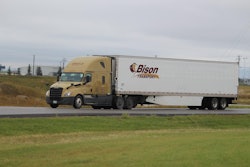Trucking companies have been falsely taught that if their average speed is below 55 mph then aerodynamics won't work in their operations. This sentiment is especially prevalent with fleets that operate in regional and local haul duty cycles.
Most fleets are unaware that average speed is meaningless when considering aerodynamics — absolutely meaningless. What matters is the distance traveled at speeds where aerodynamics save fuel. There are two key points: distance and speed where aerodynamics work.
The only way to know if aerodynamics apply to a fleet's operation is to conduct fleet analysis.
Consider this story: A company that distributes groceries and non-food items to a variety of retail locations had an internal debate regarding whether aerodynamic devices made sense for their fleet of more than 3,500 tractors. Their duty cycle involved the trucks making 8 to 20 stops on each route and their average speed was around 40 mph, well below the so-called 55 mph cut-off for aerodynamics.
A modern-thinking fleet manager urged the company to "let data decide the debate." After having a third party complete a fleet analysis on its operation, the fleet manager learned that 70% of its miles were at highway speeds. This meant that adding aerodynamic devices actually would have a decent return on investment and would reduce the fleet’s fuel cost. The company mindset changed, and they’ve been benefiting ever since.
How is this possible that a fleet could be misinformed about its operation?
Imagine your truck is based at an urban distribution center. Leaving the center, the truck spends the first hour in traffic at 20 mph. The next hour is at 60 mph getting to its destination. It then drives back to the distribution center where it again encounters one hour of highway speed and one in traffic. Not including the deliveries, that truck traveled 160 miles in four hours, which is an average of 40 mph. An unaware fleet manager would believe aerodynamics won’t save them fuel. However, that truck actually traveled 120 miles at 60 mph highway speed, which was 75% of the total miles traveled where aerodynamic devices are saving fuel.










